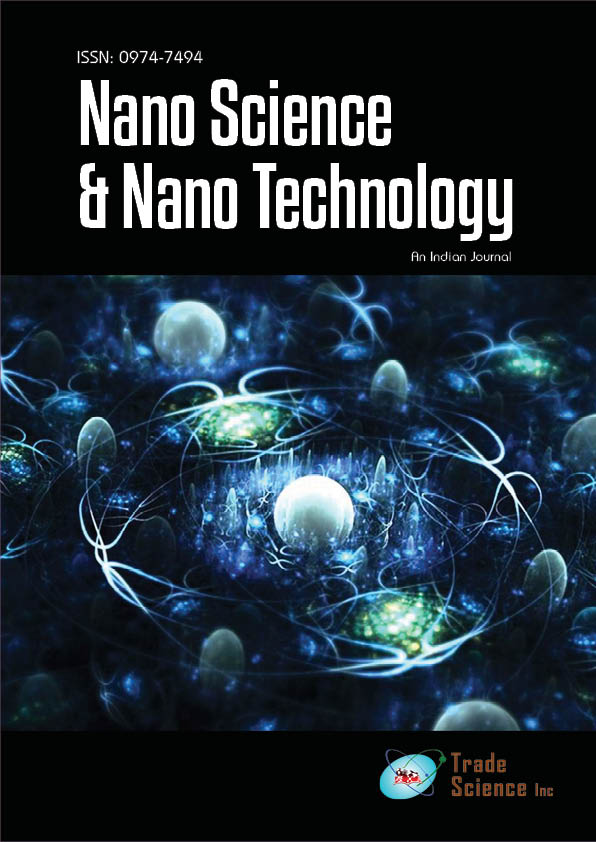Viewpoint
, Volume: 15( 1) DOI: 10.37532/0974-7494.2019.15(1).134Silver and Gold Nanoparticles in The Treatment of Cancer
- *Correspondence:
- Amitabh Tripathi
Department of Pharmacology
United College of Engineering and Research, India
E-Mail: tripathiamit@gmail.com
Received: June 11, 2021; Accepted: June 15, 2021; Published: June18, 2021
Citation: Amitabh Tripathi, Editorial note on Silver and Gold Nanoparticles in the Treatment of Cancer. Nano Tech Nano Sci Ind J. 2021;15(1):134
Abstract
Silver and Gold Nanoparticles in the Treatment of Cancer
Cancer is a term used to describe a group of diseases characterised by abnormal cell proliferation that has the potential to infiltrate or spread to other regions of the body. Benign tumours, on the other hand, do not spread. Cancer is a serious public health issue globally, and it is the second largest cause of death in the United States. In this article, we present the estimated number of new cancer cases and deaths in the United States in 2017, both nationally and by state, as well as a thorough summary of cancer incidence, mortality, and survival rates and trends based on population-based statistics [1].
NPs are minuscule particles with sizes ranging from 1 nm to 1,000 nm. Organic NPs and inorganic NPs are the two basic types of NPs. Organic NPs include micelles, dendrimers, liposomes, hybrid, and polymeric NPs. Fullerenes, quantum dots, silica, and gold nanoparticles, on the other hand, belong to the inorganic category. Nanotechnology is a potential study area that encompasses a wide range of sectors such as medicine, fuel cells, solar cells, space, chemical sensors, fabric, and so on. Among them, cancer nanoscience has piqued the interest of several researchers due to the efficient uses of nanotechnology in cancer treatment. Because of the differences in size, shape, and surface function [2-4].
Because of the intact albumin structure, greater toxicity against cancer cells compared to normal cells, and apoptosis induction as the mechanism of cell death, ACuNPs are a suitable option for use as a chemotherapeutic agent against invasive breast cancer cells.
The MTT assay was used to test the cytotoxic activity of CdNPs against human breast cancer cells (MDA-MB 231 cells). Inverted microscopy, fluorescence microscopy, gel electrophoresis, and flow cytometry were used to confirm apoptosis as the cause of cell death. The role of ROS in apoptosis was also investigated. The CdNPs@BSA that produced was shown to be appropriate for tumour micro vessel penetration [5].
Cancer is one of the most common causes of death in the world. The enhanced production of a major cytokine known as tumour necrosis factor- (TNF-) is linked to cancer in many situations. Breast cancer is associated with greater tumour cell proliferation, a higher frequency of malignancies, more metastases, and a bad prognosis for the patient [6].
The nuclear factor kappa-B (NF-κB) is a major transcription factor responsible for the production of numerous inflammatory mediators, including the tumor necrosis factor (TNFα), which has a lethal association with cancer's onset. The silver nanoparticles (AgNPs) are widely used in cancer treatment and several other biomedical applications.
References
- Siegel RL, Miller KD, Jemal A. Cancer Statistics, 2017. CA Cancer J Clin. 2017;67(1):7-30
- Gurunathan S, Park JH, Han JW, et al. Comparative assessment of the apoptotic potential of silver nanoparticles synthesized by Bacillus tequilensis and Calocybe indica in MDA-MB-231 human breast cancer cells: targeting p53 for anticancer therapy. Int J Nanomedicine. 2015;29(10):4203-22.
- Azizi M, Ghourchian H, Yazdian F, et al. Cytotoxic effect of albumin coated copper nanoparticle on human breast cancer cells of MDA-MB 231. PLoS One. 2017;12(11):e0188639.
- Ebrahimzadeh MA, Tafazoli A, Akhtari J, et al. Engineered silver nanoparticles, a new nanoweapon against cancer. Anticancer Agents Med Chem. 2018;18(14):1962-69.
- Shahriar SMS, Rabbi M F, Jahan D et al. A review on: Nanoparticles and their utilization in cancer detection and treatment. Nano Tech Nano Sci Ind J. 2018;12(2):126
- Chan K, Morris GJ. Chemoprevention of breast cancer for women at high risk. Semin Oncol. 2006;33(6):642-46.

